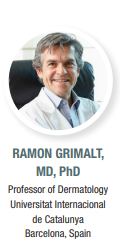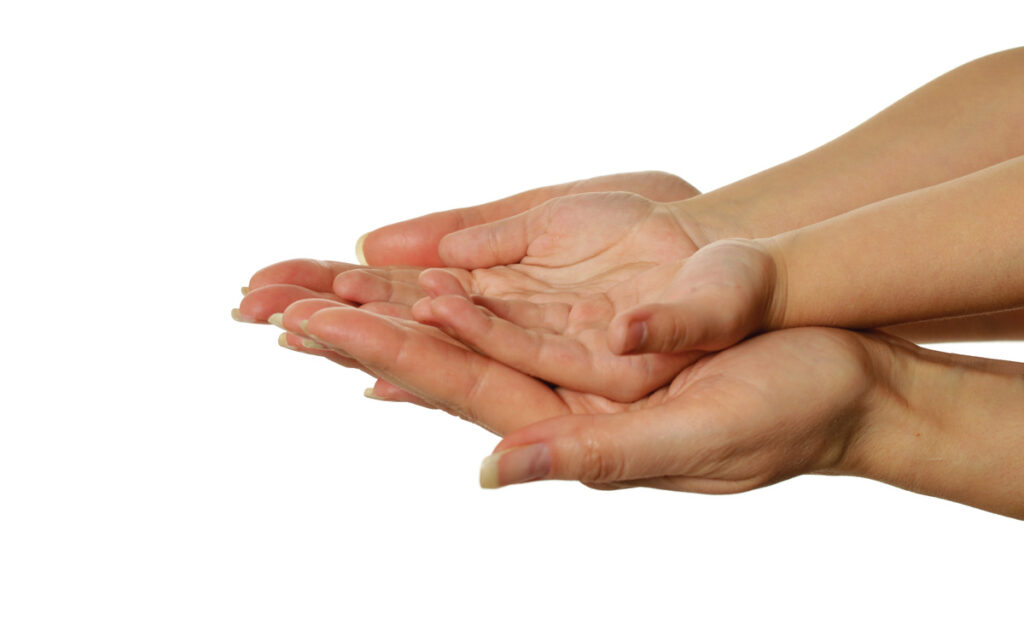With Ramon Grimalt, MD, PhD

Brief immersion to water (BIW) may be a quick, convenient, low-cost initial cystic fibrosis (CF) screening tool to help guide clinical decisions for conducting confirmatory tests, especially where resources are limited.
Individuals with aquagenic wrinkling of the palms (AWP) are often referred to dermatologists for assessment. Since AWP is well known to be associated with cystic fibrosis (CF), diagnostic testing for CF is commonly performed in patients complaining of AWP.
A new prospective study1 measuring AWP in patients with CF provides further evidence for this association and turns the idea about diagnostic testing back sides by proposing use of the brief immersion to water (BIW) test as a screening tool for CF in individuals with symptoms and signs that raise suspicion for CF, noted Ramon Grimalt, MD, PhD.
“The study, which was conducted by Alexopoulos et al. in a large cohort of children with CF, showed for the first time that the BIW test can be a valuable, fast, and inexpensive screening method for CF. More broadly, it shows that easy and cheap methods can be used for the diagnosis of complex situations,” Dr. Grimalt said.

Dr. Grimalt is Professor of Dermatology, Universitat Internacional de Catalunya, Barcelona, Spain, and co-authored a linked commentary on the published study in which the investigators from the Agia Sofia Children’s Hospital in Athens, Greece, measured AWP in 100 pediatric patients with CF, 50 of their CF-heterozygote parents, and a control group comprised of 100 healthy children.2
The BIW test involved immersion of both hands in room temperature tap water for 11 minutes. Signs of AWP, including palmar wrinkling, edema, papules, pruritus, and pain, were assessed at 3, 7, and 11 minutes after the BIW test. A positive AWP test was defined as wrinkling involving > 30% of the palmar surface area.
At the first evaluation at 3 minutes, 68% of the CF patients were AWP positive compared to just 8% of their CF-heterozygote parents, and none of the healthy pediatric controls (P < .01). With the exceptions of pain and pruritus at 3 minutes and pain at 7 minutes, all signs of AWP were observed at significantly higher rates among the CF patients compared with the other study groups at all time points (P < .01).
In addition, results of a Kaplan-Meier analysis conducted to explore the progression of AWP over time showed that the 5 measured signs of CF developed significantly earlier in the CF patients compared to their heterozygote parents and healthy controls. Analyses evaluating the diagnostic performance of the BIW test showed that assessments of papules and wrinkling at 7 minutes had the highest sensitivity and specificity for discriminating between individuals with and without symptoms and signs raising the suspicion of CF.
Further investigations
Dr. Grimalt agrees with the authors of the research that if their findings are verified in future studies, the BIW test could be implemented in resource-limited scenarios, as a quick and easy, low-cost, risk-free initial CF screening test that could guide clinical decisions for conducting confirmatory tests, such as the sweat test and/or molecular DNA analysis, that are expensive and available only in certain facilities.
“It would be worthwhile and a great idea for these authors or other investigators to repeat the study in independent patient cohorts,” Dr. Grimalt said.
Dr. Grimalt noted that the pathophysiology of AWP is not clear.
“A few theories have been proposed and indicate the main causes are the increased tonicity of the sweat in people with CF and the upregulation of aquaporins in the keratinocytes of these patients,” he said.
By Cheryl Guttman Krader
REFERENCES
1. Alexopoulos A, Chouliaras G, Kakourou et al. Aquagenic wrinkling of the palms after brief immersion to water test as a screening tool for cystic fibrosis diagnosis. J Eur Acad Dermatol Venereol. 2021;35(8):1717-1724. doi: 10.1111/jdv.17312.
2. Grimalt G, Carbonell M, Grimalt R. Aquagenic wrinkling of the palms and cystic fibrosis diagnosis. J Eur Acad Dermatol Venereol. 2021;35(8):1608. doi: 10.1111/jdv.17445.

